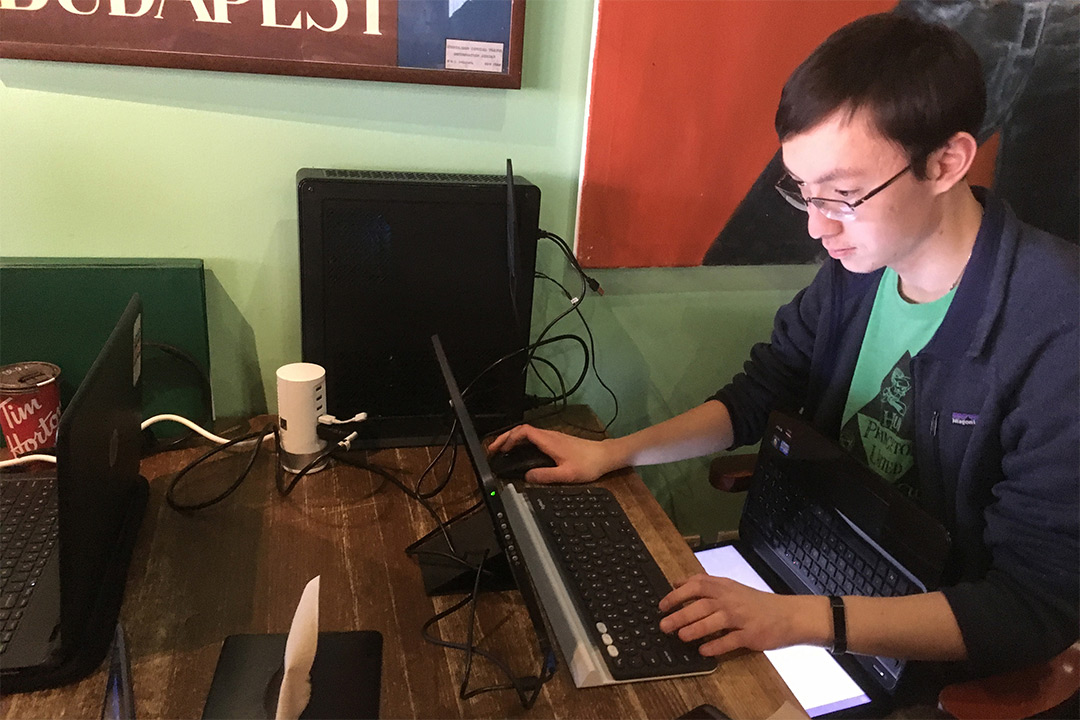RIT student develops tool to visualize molecular dynamics of proteins in virtual reality
Kyle Diller developed plug-in for ChimeraX that helps users create virtual reality movies
Gregory Babbitt
Kyle Diller
A Rochester Institute of Technology student developed a tool that can help scientists visualize molecular motion and dynamics of proteins using virtual reality headsets.
Kyle Diller, a fifth-year computer science student from East Windsor, N.J., developed a plug-in application for the molecular visualization program UCSF ChimeraX. The application is currently under development at the University of California at San Francisco, where they are developing new visual capabilities in more life-like multidirectional shadowing and virtual reality. Diller’s plug-in allows users to display an atomic structure as if it were a movie so they can manipulate how the view looks and see how the protein or structure changes.
“Molecular dynamics is becoming a big field within bioinformatics and this can help you see how physics plays out at the atomic level,” said Diller. “Chimera X is a fairly new visualizer but it previously didn’t have this capability. I hope that this helps people with their molecular dynamics simulations.”
Diller created the tool in the spring semester as a project for his bioinformatics languages class taught by Gregory Babbitt, an associate professor in the Thomas H. Gosnell School of Life Sciences.
“With Kyle’s project, we wanted to incorporate these features into our current software for visualizing comparative protein motions,” said Babbitt. “He did such a nice job extending ChimeraX that I suggested that he offer his viewer as a plug-in for their user community. I think it is a perfect example of how a student can take an open-ended class project and develop it into something that can help the broader scientific community.”
The plug-in Diller developed, MolecularDynamicsViewer, is available to download from the UCSF ChimeraX toolshed or GitHub.











